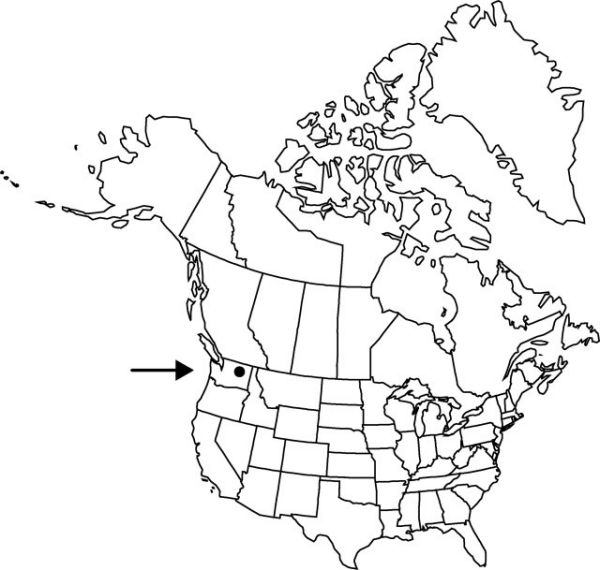Allium constrictum
Syst. Bot. 13: 211. 1988.
Bulbs 1–5+, not clustered on stout, primary rhizome, ovoid, 1–1.5 × 0.8–1.4 cm; outer coats enclosing 1 or more bulbs, brownish, membranous, lacking cellular reticulation or cells arranged in only 2–3 rows distal to roots, ± quadrate, without fibers; inner coats white, cells obscure, quadrate. Leaves usually persistent, green at anthesis, 2, basally sheathing, sheaths not extending much above soil surface; blade solid, flat, broadly channeled, falcate, 10–35 cm × 1–3 (–5) mm, margins entire. Scape persistent, solitary, erect, solid, terete, enlarged apically but distinctly constricted just proximal to inflorescence, 15–20 cm × 1.5–4 mm. Umbel persistent, erect, compact, 15–30-flowered, hemispheric to globose, bulbils unknown; spathe bracts persistent, 3, 5–7-veined, ovate, ± equal, apex acute. Flowers ± stellate, 7–8 mm; tepals spreading, light pink to rose with prominent green or reddish midribs, narrowly lanceolate, ± equal, becoming papery in fruit, margins entire, apex acuminate; stamens exserted; anthers blue-gray; pollen light blue to gray; ovary crested; processes 6, 2 per lobe, low, rounded, margins entire; style exserted, linear; stigma capitate, unlobed; pedicel 10–20 mm. Seed-coat shining; cells smooth. 2n = 14.
Phenology: Flowering May–Jul.
Habitat: Shallow, lithosolic soils, often dry and sandy
Elevation: 300–500 m
Distribution

Wash.
Discussion
Of conservation concern.
Allium constrictum is known only from Douglas, Grant, and Lincoln counties.
Selected References
None.
Lower Taxa
"thicker" is not a number."broad" is not a number.